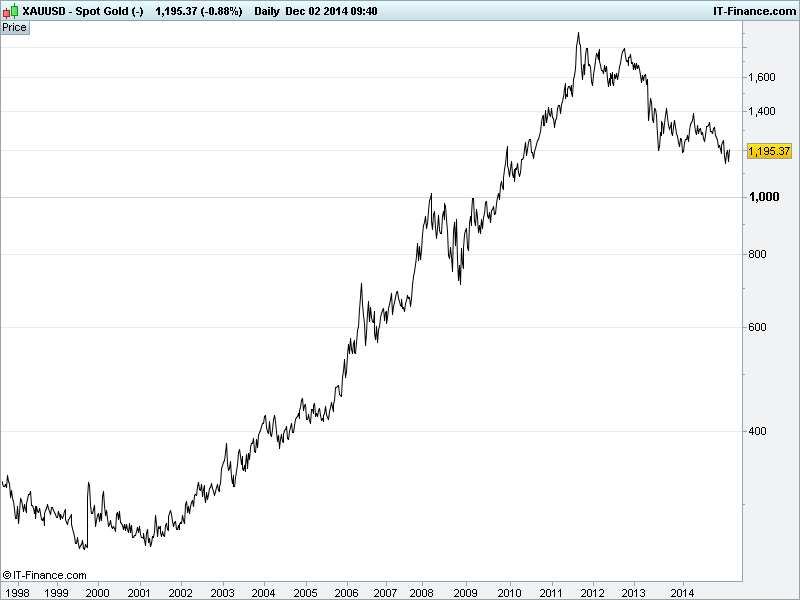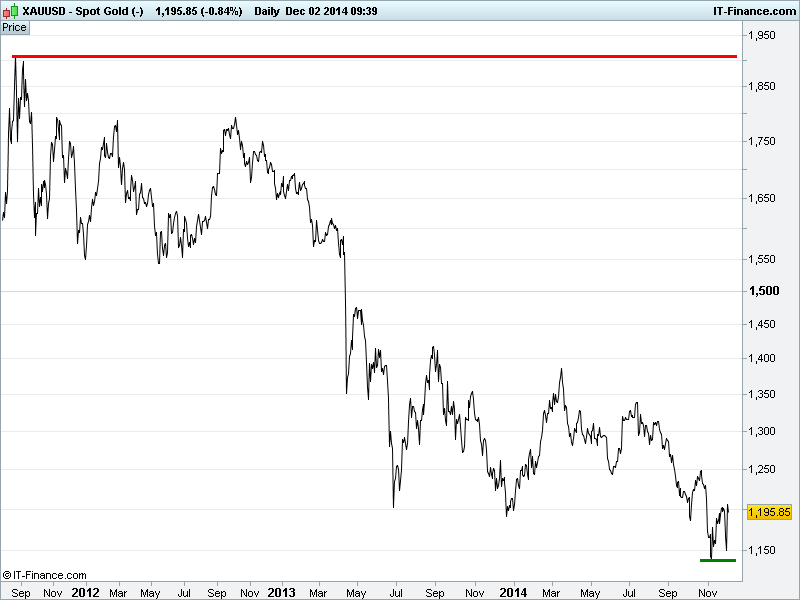Popularity from many sources
The yellow metal has become one of the most popularly traded commodities thanks to its meteoric rise from lows of $250 at the turn of the millennium to $700/oz when the financial crisis was born mid-2007 and highs of $1925 by mid-2011 when worries about US Subprime defaults were replaced by fears ofEurozone sovereign collapses and the future of the Euro.
Despite having no real worth in its raw form and providing zero income it is still considered a long-term investment (physical holdings), a hedge for inflation (which central banks want to kick-start struggling economies; China, Europe, Japan) and a port in a storm (store of worth, safe haven) in times of crisis.
Meteoric rise

The metal’s price is driven by both physical demand(jewellery, long term investment) and speculation with the latter dependent on sentiment towards global meltdown and how the US Dollar will move (commodities denominated in US dollars) in relation to demand for the world’s reserve currency and perception of US monetary policy direction.

